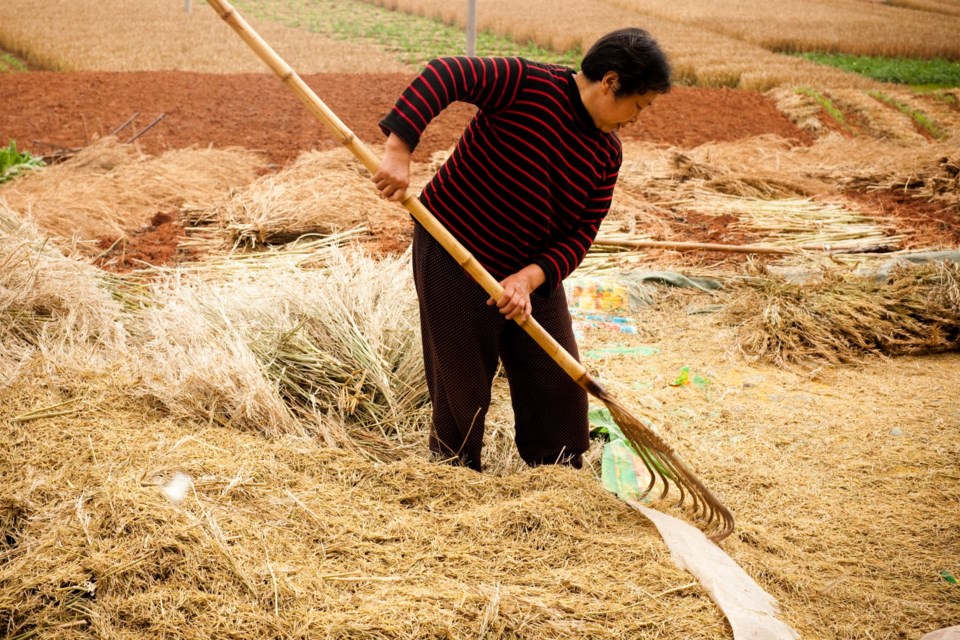WESTERN PRODUCER — A rapeseed research breakthrough in China could eventually cut into Canadian canola exports to that country.
The Chinese Academy of Agricultural Sciences is testing a new rapeseed variety designed to bring idle fields back into production during the winter months, according to an article published in the South China Morning Post.
The variety is being tested in Jiangxi province.
The hope is that the crop will eventually be grown on an estimated 10.6 million acres of fields that currently sit idle following the rice-growing season.
“This creates huge potential for rapeseed expansion and production,” CASS researcher Wang Xinfa said in an interview with Science and Technology Daily, according to the South China Morning Post article.
The new variety has a shorter growing cycle, better cold tolerance and earlier fertility, according to CASS.
“Winter (in eastern China) is actually ideal for growing rapeseed, as lower temperatures will reduce the probability of pest and disease damage, while this temperature is still suitable for rapeseed growth,” Jia Yinsuo, chair of the China branch of the African Academy of Sciences, told the South China Morning Post.
It is anticipated that the variety could increase China’s rapeseed production by 11.25 million tonnes per year.
Jeremy Welter, a director with the Agricultural Producers Association of Saskatchewan, said he is excited for Chinese growers because it could increase their revenues.
However, he is not thrilled by the prospect that it could reduce revenue on his farm near Kerrobert, Sask.
“If this does turn out to be something that allows China to take a step back from Canadian canola in any major way, it will adversely impact canola markets,” he said.
“China has historically been an inordinately large buyer of canola.”
In fact, China is Canada’s top canola market by a longshot. The Asian giant purchased 1.99 million tonnes of canola through the first half of the 2022-23 crop year, or 49 percent of total sales for that period.
He doesn’t know if the rapeseed China grows is interchangeable with Canadian canola, or if the two crops service different markets.
But it sounds like a potential threat and should provide yet another impetus for groups like the Canadian Canola Growers Association and the Canola Council of Canada to knock on doors in other markets around the world, said Welter.
The good news is that exploding demand from North America’s burgeoning renewable diesel and sustainable aviation fuel sectors could help offset any lost demand from China.
The Government of China has been “sounding the alarm” on the need to curb oilseed imports and become more self-sufficient in edible oil production, according to the South China Morning Post article.
The country is about 30 percent self-sufficient today, according to CAAS. That number would increase by 12 percentage points if the new rapeseed variety proves successful.
Wang Bing Bing, chief executive officer of BioBin Data Science, a firm specializing in intelligent breeding platforms, told the South China Morning Post that geopolitical conflicts and mounting tensions with the West has China rethinking its reliance on foreign oilseeds.
“Although China is not in a seed-purchasing dilemma for now, concerns have arisen in Beijing after it saw Russian seeds subjected to sanctions, which is why China has repeatedly stressed the need to increase the cultivation of oil crops this year, especially short-cycle ones,” he said.
Imports of grains and soybeans have blossomed under the reign of Chinese President Xi Jinping, who got rid of the five percent maximum import ceiling established in 1996 when he came to power in 2013.
Imports of grains and soybeans have soared, amounting to 23.6 percent of domestic production in 2021, according to the Dim Sums Blog.
Xi now appears to be backtracking from that more open approach to trade. Worries about food insecurity were “front and centre” in his Dec. 24, 2022, speech delivered at the Rural Work Conference in Beijing.
His new plan is to boost domestic output through the adoption of new technology, while allowing “moderate” crop imports, according to Dim Sums.
There has also been a concerted effort to diversify away from a reliance on North American imports, shifting instead to places like Brazil and Russia.

